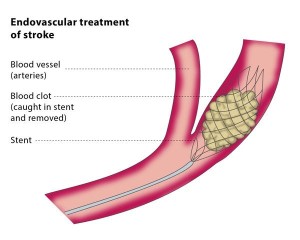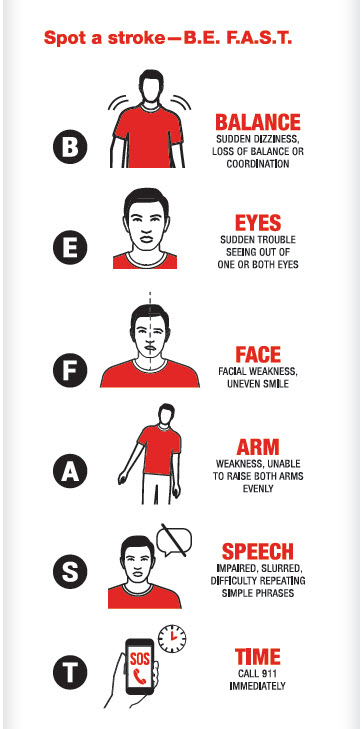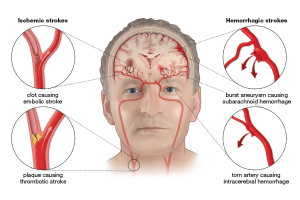STROKES: New and Advanced Treatments
Dr. Prem Pillay, Senior Neurosurgeon and Stroke Expert, Singapore


 Stroke remains a leading cause of death and long-term disability worldwide including Singapore and Asia, affecting over 10 million people annually[4]. However, recent breakthroughs in diagnosis, treatment, and rehabilitation offer new hope for patients and their families. This summary provides an overview of the latest advances in stroke care, emphasizing the critical importance of rapid intervention and highlighting promising new approaches to improve outcomes.
Stroke remains a leading cause of death and long-term disability worldwide including Singapore and Asia, affecting over 10 million people annually[4]. However, recent breakthroughs in diagnosis, treatment, and rehabilitation offer new hope for patients and their families. This summary provides an overview of the latest advances in stroke care, emphasizing the critical importance of rapid intervention and highlighting promising new approaches to improve outcomes.

![]() Download Explaining Stroke Brochure
Download Explaining Stroke Brochure
Understanding Stroke
A stroke occurs when there is a disruption of blood flow to the brain, either due to a blockage (ischemic stroke) or a rupture of a blood vessel (hemorrhagic stroke)[4]. This interruption of blood flow deprives brain cells of oxygen, causing damage and potential cell death. The effects of a stroke can vary widely depending on the location and extent of the brain injury. Ischemic stroke needs to be quickly identified and treated with anti-platelet and anti-coagulant therapy and endovascular therapy. Patients with TIAs and RINDs should be effectively screened with MRA and DSA for treatable carotid artery stenosis.
Patients with hemorrhage from brain AVMs , Aneuryms, Cavernomas, dural AV Fisutulas should also be diagnosed early with CT, MRI, and DSA. Some patients required early surgery including microsurgery. Selected patients will benefit from endovascular therapy including embolization, coiling, flow diverters and others from Stereotactic Radiosurgery.
The Urgency of Stroke Treatment
One of the most critical factors in stroke treatment is time. The phrase “time is brain” underscores the importance of rapid intervention to limit cerebral damage[1]. Recent research has reinforced the need for urgent action, even when symptoms appear to resolve quickly.
Transient Ischemic Attacks (TIAs)
New guidelines emphasize that even brief stroke symptoms, lasting less than an hour (known as transient ischemic attacks or TIAs), require immediate medical attention[7]. These “warning strokes” can precede a full-blown stroke and should be treated as medical emergencies.
Advances in Stroke Diagnosis
Early and accurate diagnosis is crucial for effective stroke treatment. Recent technological advancements have improved our ability to quickly identify and characterize strokes.
Portable MRI Technology
Researchers have developed a portable MRI machine that can be brought to a patient’s bedside, potentially reducing delays in diagnosis[4]. This innovation allows for faster imaging and could significantly improve the speed of stroke diagnosis and treatment initiation.
Cutting-Edge Stroke Treatments
The landscape of stroke treatment has evolved rapidly in recent years, with several groundbreaking approaches showing promise.
Endovascular Interventions
Mechanical thrombectomy, a procedure to remove blood clots from large vessels in the brain, has emerged as a highly effective treatment for certain types of ischemic strokes[5]. This technique has shown remarkable results, with a lower number needed to treat than percutaneous coronary intervention for heart attacks. Bleeding from AVMs can be treated with endovascular embolization and aneurysms can be occluded with platinum coils or excluded from the vascular circulation with Flow diverters. Subdural hematomas can also be treated using endovascular embolization of the middle meningeal artery.
Thrombolysis
Intravenous thrombolysis with recombinant tissue plasminogen activator (rt-PA) remains a cornerstone of acute ischemic stroke treatment[1]. Recent studies have explored extending the time window for this treatment and investigated alternative thrombolytic agents like tenecteplase[8].
Brain Stimulation Techniques
Non-invasive brain stimulation methods, such as repetitive transcranial magnetic stimulation (rTMS) and transcranial direct current stimulation (tDCS), are being studied for their potential to enhance motor recovery after stroke[6].
Neuroprotective Strategies
Research is ongoing into neuroprotective therapies that could be administered early, potentially even before imaging, to limit brain damage in stroke patients[1].
Rehabilitation and Recovery
Stroke rehabilitation has seen significant advancements, with new technologies and approaches offering hope for improved recovery.
Brain-Computer Interfaces (BCIs)
BCIs are emerging as a promising tool for stroke rehabilitation, allowing patients to control external devices using brain signals[10]. This technology may help stimulate neuroplasticity and improve motor function recovery.
Virtual Reality and Robotics
Virtual reality and robot-assisted therapies are being integrated into rehabilitation programs, offering new ways to engage patients and provide intensive, targeted therapy[6][10].
Personalized Rehabilitation
There is a growing emphasis on tailoring rehabilitation strategies to individual patients, considering factors such as the type and location of the stroke, as well as the patient’s specific deficits and goals[3].
Prevention and Secondary Stroke Risk Reduction
Preventing strokes and reducing the risk of recurrence are crucial aspects of comprehensive stroke care.
Blood Pressure Management
Recent research has highlighted the importance of personalized blood pressure management in the acute phase after a stroke[4]. Optimal blood pressure targets may vary depending on individual patient factors.
Antiplatelet Therapy
Dual antiplatelet therapy, combining aspirin with clopidogrel, has shown promise in preventing recurrent strokes in certain high-risk patients[8].
Lifestyle Modifications
Emphasizing healthy lifestyle choices, including diet, exercise, and smoking cessation, remains a cornerstone of stroke prevention efforts.
Future Directions
The field of stroke care is rapidly evolving, with several exciting areas of ongoing research:
- Cell therapies: Investigations into stem cell treatments for stroke recovery are underway, with early studies showing potential for improving motor function[10].
- Artificial intelligence: AI is being explored for its potential to enhance stroke diagnosis, treatment selection, and outcome prediction.
- Telemedicine and telerehabilitation: These technologies are expanding access to specialized stroke care and rehabilitation services, particularly in underserved areas[6].
- Combination therapies: Researchers are exploring the potential of combining different treatment modalities, such as brain stimulation with traditional and robotic rehabilitation techniques, to enhance recovery[6].
Conclusion
The landscape of stroke care is rapidly evolving, with new technologies and treatment approaches offering hope for improved outcomes. From faster diagnosis and more effective acute interventions to innovative rehabilitation techniques, these advancements are transforming the way we approach stroke care.
However, the most critical factor in stroke treatment remains rapid recognition and response to symptoms. Public education about stroke warning signs and the importance of seeking immediate medical attention is crucial. With continued research and implementation of these new approaches, we can look forward to better outcomes and quality of life for stroke survivors in the future.
Remember, if you or someone you know experiences symptoms of a stroke, even if they seem to resolve quickly, seek emergency medical care immediately. Every minute counts when it comes to preserving brain function and improving the chances of a full recovery.
With many years of experience in diagnosing Strokes and access to the latest technological advancements, Dr Prem Pillay offers patients the highest standard of care. From accurate diagnosis to tailored treatment plans, our approach ensures the best possible outcomes for individuals affected by this challenging condition.
If you or a loved one has been diagnosed with a Stroke, we welcome you to seek consultation with our specialized team. Together, we can develop a comprehensive evidence based and personalized treatment strategy that addresses your unique needs and aims to provide the best chance for a positive outcome.
References:
[1] https://pmc.ncbi.nlm.nih.gov/articles/PMC1448697/
[2] https://www.mayoclinic.org/diseases-conditions/stroke/diagnosis-treatment/drc-20350119
[3] https://www.frontiersin.org/journals/neurology/articles/10.3389/fneur.2024.1402729/full
[4] https://www.yalemedicine.org/news/3-stroke-breakthroughs
[5] https://bmjmedicine.bmj.com/content/2/1/e000407
[6] https://pmc.ncbi.nlm.nih.gov/articles/PMC10650295/
[8] https://pmc.ncbi.nlm.nih.gov/articles/PMC8407466/
[9] https://www.ihi.europa.eu/news-events/newsroom/umbrella-project-sets-sights-stroke-care-revolution
